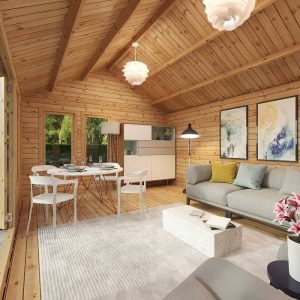 Warmth and ventilation. These are the key.
Warmth and ventilation. These are the key.
The moisture content in the timber of your cabin will change depending on varying climate and weather conditions.
It is therefore vital to do what you can to help keep this moisture under control and prevent it from building up and causing damp.
The 4 main things to consider are:
- Insulation
- Heating
- Ventilation
- Treatment
Insulation
Heat retention in your cabin will help keep damp at bay. And the best way to retain heat is with insulation.
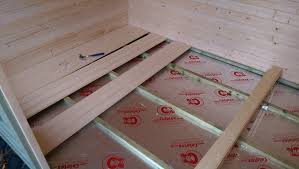 This will trap heat inside the cabin thereby helping to keep the temperature more stable.
This will trap heat inside the cabin thereby helping to keep the temperature more stable.
Even with thicker logs and double glazing, up to 70% of heat will be lost through the roof and the floor so fitting floor insulation directly under the floor boards and between the floor joists together with roof insulation above the roof boards makes all the difference.
Without insulation, cool areas such as the windows will collect moisture when the temperature drops which can lead to damp and mould.
Basic insulation like silver backed bubble wrap would work, however there are various products available made from solid foam in a range of thicknesses that create very effective insulation, for example Celotex.
See my blog How to Insulate a Log Cabin for advice.
Heating
A good source of heating will keep damp under control.
If you are planning on running an electricity supply to your cabin, there are a variety of heating options you can consider:
 Electric convection heater – free standing or wall mounted. Usually with 24 hour timers and thermostat, they heat the air quickly. Ideal for year-round use, they are relatively cheap to buy and install.
Electric convection heater – free standing or wall mounted. Usually with 24 hour timers and thermostat, they heat the air quickly. Ideal for year-round use, they are relatively cheap to buy and install.
- Electric radiator – wall-mounted. Can be linked to a thermostat and timer, they have an electric element inside that heats up. Slower to heat up than convection heaters with slightly less
 temperature control.
temperature control.
- Electric oil-filled radiator – free standing. Can be linked to a thermostat and timer, the oil retains heat thereby keeping the cabin warm for longer after they are switched off. Low cost with no installation.
 Electric fan heater – portable or fixed. Providing instant heat by passing air over a heat element which is then blown out of a vent. Great for circulating heat although they can use up a lot of energy so keep an eye on how long you use them for.
Electric fan heater – portable or fixed. Providing instant heat by passing air over a heat element which is then blown out of a vent. Great for circulating heat although they can use up a lot of energy so keep an eye on how long you use them for.
- Halogen heater – portable. Powered by electricity but the heat is provided
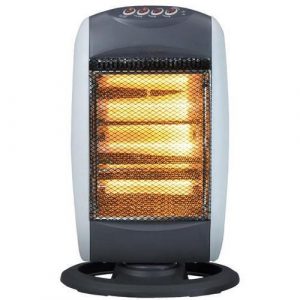 by halogen elements rather than traditional electrical coils. Energy efficient and durable, they are a little more expensive than some of their electric counterparts but the running costs are cheaper.
by halogen elements rather than traditional electrical coils. Energy efficient and durable, they are a little more expensive than some of their electric counterparts but the running costs are cheaper.
- Underfloor heating. Provides an even heat to the entire cabin rather than just a localised spot. Uses a mesh element fitted below the floor. An additional floor covering is needed – bear in mind the floor would have to be lifted if there were any maintenance problems. More expensive to install than heaters and needs to be done by a suitably qualified person such as an electrician (not an average DIY job).
If you are not going to have an electricity supply, there are still ways you can successfully heat your cabin.
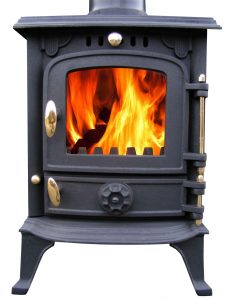 Log Burning Stove. Energy efficient, stylish, ambient and cosy. They warm up quickly and retain the heat well. Can be expensive to set up, however running costs are low. It is important installation is carried out professionally by a HETAS engineer. A carbon monoxide alarm is also a must when you have a log burner.
Log Burning Stove. Energy efficient, stylish, ambient and cosy. They warm up quickly and retain the heat well. Can be expensive to set up, however running costs are low. It is important installation is carried out professionally by a HETAS engineer. A carbon monoxide alarm is also a must when you have a log burner.
- Solar Powered Heater. Solar panels on the roof can heat water that can be fed through to a single radiator. Very economical, environmentally friendly and safe. It is also possible to have solar PV panels professionally installed that can generate electricity. This, in turn, can be used to for electricity powered heating described above.
Top tip: best to avoid Calor Gas and paraffin heaters – although good sources of heat, they pump out moisture which defeats the object of what you are trying to achieve with a heater in the first place!
And for added warmth, don’t forget rugs, curtains and carpets.
In addition to heating, it might also be worthwhile installing a
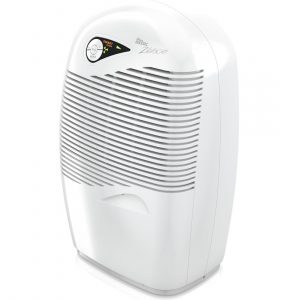 Dehumidifier
Dehumidifier
- removes excess moisture from the air
- helps combat condensation
- helps prevent mould
- reduces damp on walls
Ventilation
A sure way to prevent moisture and condensation building up and causing damp is to keep the log cabin well ventilated.
This is especially important if the cabin is shut up for any longer than a month or two, particularly during the winter.
Even something as straightforward as opening the door and windows every few days is a good way to keep moisture levels down by moving and replacing the air.
To get the air flowing, it is worthwhile installing
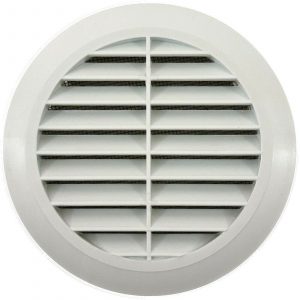 Air Vents – you need a minimum of two, ideally installed towards the top of opposite walls – these will allow air circulation in the cabin and create a drier atmosphere. Make sure the vents are mesh backed to keep insects out!
Air Vents – you need a minimum of two, ideally installed towards the top of opposite walls – these will allow air circulation in the cabin and create a drier atmosphere. Make sure the vents are mesh backed to keep insects out!
Treatment
It’s a given that the outside of a log cabin is going to be treated to protect it against the weather.
But it’s also a good idea to treat the interior walls of your cabin with stain or paint too to help prevent the build up of moisture.
If both sides of the wall logs are treated it balances the wood. By treating one side only, moisture will automatically be attracted to the area of least resistance – the untreated side.
A lot of log cabin manufacturers do recommend treating the inside of their cabins and you may prejudice your guarantee by not doing so.
So, in summary, by following these simple guidelines, you can have peace of mind knowing you are doing all the right things to keep your cabin warm and damp-free.

Great blog! The step by step process is very easy to follow specially each steps show the photo of what you need to use to start with it.